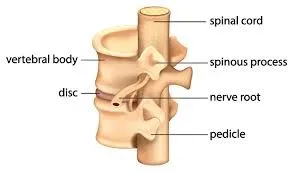Spinal Cord Surgery
Spinal cord surgery is a procedure for treatment of injuries, deformities, and diseases that affect the spinal cord. The objective of this procedure is to relieve pressure, restore stability, and improve function and avoid further damage. Surgical approaches can be open (traditional) or minimally invasive, with options like robotics, and procedures include decompression, fusion, and instrumentation with devices like screws and rods.

Spinal cord surgeries include
➔Trauma: Injuries from accidents or impact
➔Degenerative conditions: Issues like herniated discs and spinal stenosis
➔Deformities: Conditions such as scoliosis and kyphosis
➔Tumors: Abnormal growths on or near the spinal cord
➔Infections: Infections within the spinal column
➔Vascular malformations: Abnormal blood vessel formations
Common surgical procedures
➔Spinal Decompression and Fusion: A very common surgery that relieves pressure on nerves or the spinal cord and stabilizes the spine.
- Decompression: Removal of parts of the bone or disc to create more space.
- Fusion: Joining multiple vertebrae using a bone graft and instruments like screws and rods to create stable structure.
➔Spinal Instrumentation: Using devices like titanium or steel implants to support the spine.
➔Minimally Invasive Surgery: Deploying smaller incisions and specialized tools, including robotic assistance for greater precision.
➔Anterior Cervical Discectomy and Fusion: A procedure to address problems in the neck by accessing the spine from the front.
➔Shortening Procedure: A technique to relieve tension on the spinal cord by shortening the spinal column.
Meet Our Doctor

